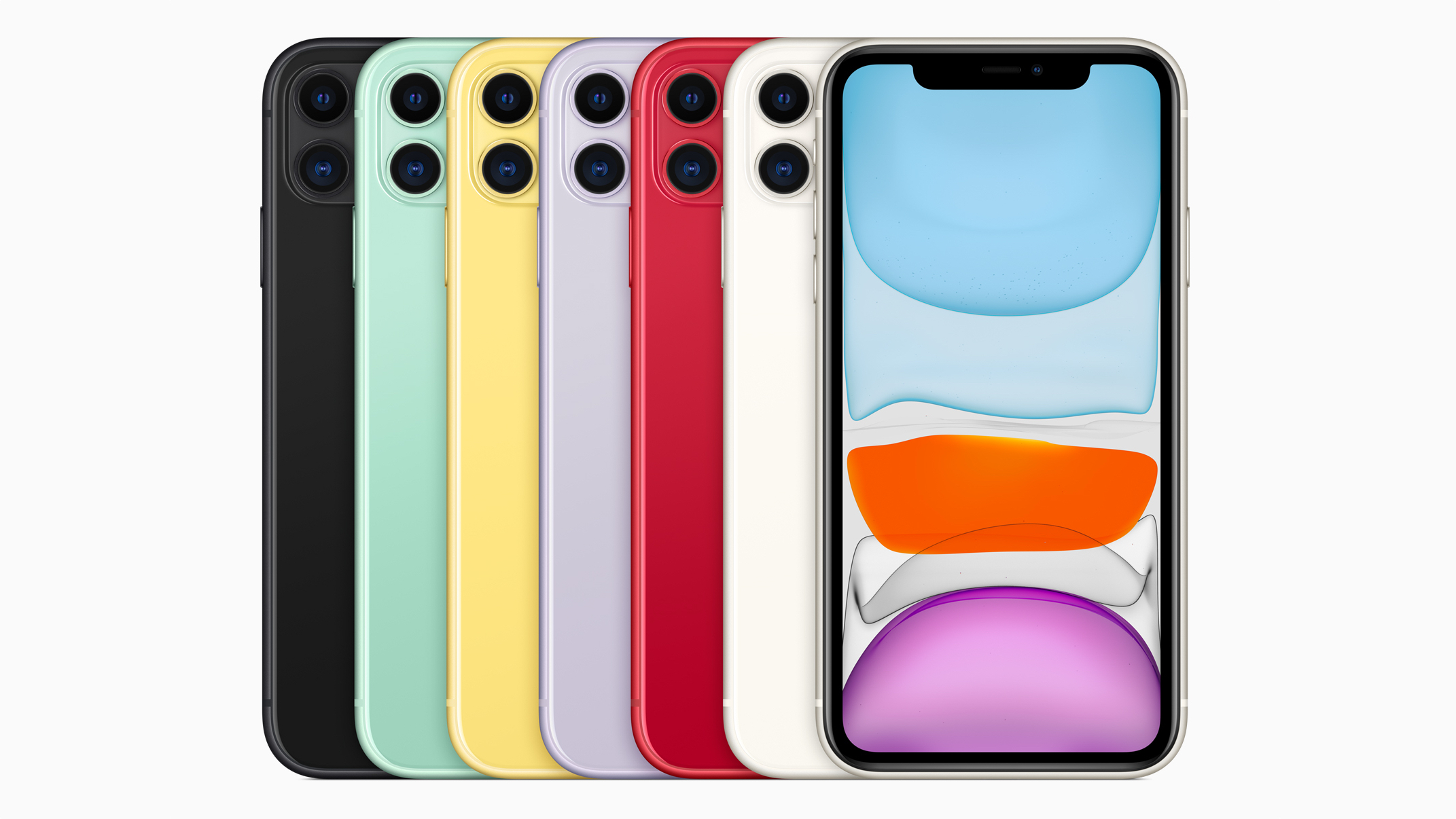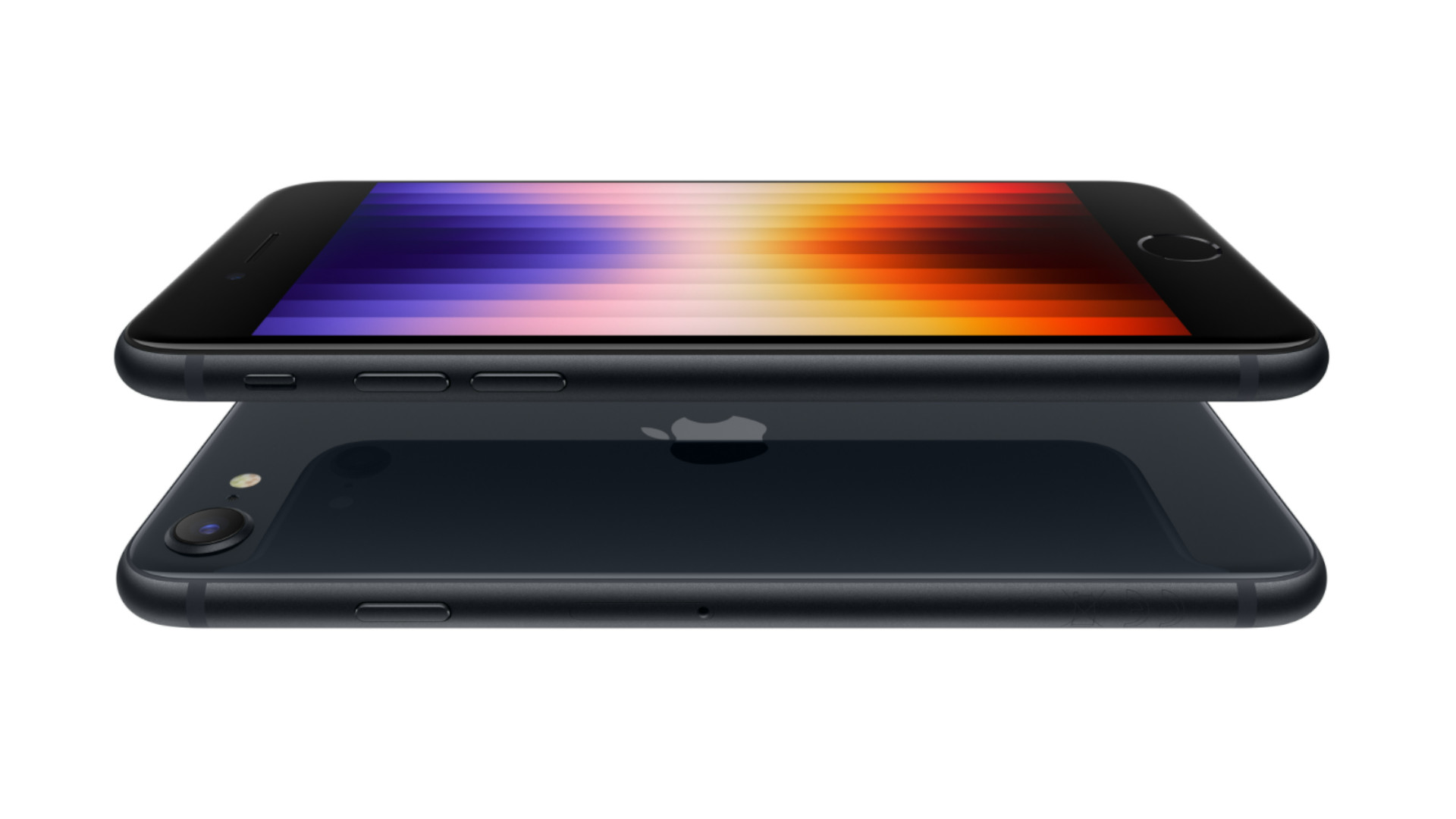Although Apple might be making a big noise about its refreshed iPhone SE (2022), it's not the only cut-price handset in the company's generous lineup. 2019's iPhone 11 is still sold by the company, and it represents a cheaper iPhone proposition that's quite different from the iPhone SE, but is still super-tempting.
Interestingly, each of the two phones has more advanced features than the others. The iPhone 11 features a newer all-screen design and dual-camera system, for example, while the iPhone SE (2022) features Apple's most advanced phone processor and 5G support.
It means that the two phones have different advantages depending on what your priorities are, and that's even before we talk about the actual price.
So if you're wondering which of these is the best iPhone for you, we'll compare all the key features in this guide, so you can work out which to invest in.
iPhone SE (2022) vs iPhone 11: Price & Storage
Both phones fall well into the budget bracket. The iPhone SE line has been designed from the ground up to be wallet-friendly, and it's currently the cheapest of the iPhone range: its 64GB version comes in at $429/£419, while the fully expanded 256GB edition costs at $579/£569.
The iPhone 11 is just more expensive for the base version: Apple is asking $499/£489 for the 64GB model. Though the larger 128GB version is actually cheaper than the SE: it's $549/£539 for the 128GB version, though obviously you get less storage than the SE gives you.
That's a tantalisingly small gap, and one which should give any prospective SE buyer pause: feature-wise, as we'll get to, the iPhone 11 serves up what seems like a far more laden plate, and it's hard to argue that its looks aren't a lot nicer, too.
Get all the latest news, reviews, deals and buying guides on gorgeous tech, home and active products from the T3 experts
Is the iPhone 11 a bargain, though? Compared to the $699/£729 launch price of the 64GB model it's now a lot more affordable, but it is, don't forget, now approaching four years old.

The iPhone 11 is available in a host of colours - and its rear is very reminiscent of modern flagship phones.
iPhone SE (2022) vs iPhone 11: Size & screen
Side-by-side, there's no question the larger, notched screen design of the iPhone 11 is the more attractive of the two. It's far more spacious, with the screen measuring 6.1 inches corner-to-corner compared to the iPhone SE's 4.7-inch display with forehead and chin frame around it.
Both are detailed and high-resolution LCD screens, with a pixel density of 326ppi. Both support Apple's easy-on-the-eyes True Tone tech, both can hit a brightness of 625 nits, and both can show the vibrant P3 colour gamut.
The iPhone 11 is the bigger of the pair on each axis, measuring 5.94 inches (150.9 mm) x 2.98 inches (75.7 mm) to the iPhone SE's 5.45 inches (138.4 mm) x 2.65 inches (67.3 mm).
The iPhone SE, which inherits its body from the iPhone 8, is thinner too. It has a depth of 0.29 inches (7.3 mm) compared to the iPhone 11's chunkier 0.33 inch (8.3 mm) body – if you're small-pocketed then the SE is the clear winner, and at 5.09 ounces (144 grams) it's almost two ounces lighter than the heavyweight 6.84 ounce (194 gram) iPhone 11.

The iPhone SE's colour lineup is (relatively) small - and its chassis design is still straight out of the iPhone 8.
iPhone SE (2022) vs iPhone 11: Performance & Battery
With older hardware comes an older processor. The iPhone 11 carries Apple's A13 Bionic processor, whereas the iPhone SE has been granted A15 Bionic, the same chip that powers the iPhone 13.
On paper there might not appear to be much between them. They each have six cores, two of which are dedicated to performance and four to efficiency. They each have a four-core GPU, and support for Neural Engine tasks. But the work that Apple has been doing on its chips over the past few years has been pretty extreme. While the iPhone 11 won't ever feel slow, it's also not going to have the same snap as the new iPhone SE when it comes to more complex tasks. And the newer chip is more battery efficient, and can offer better performance when it comes to things like improving photos as you shoot.
It's worth considering future support, too. Apple hasn't abandoned old hardware for a long time (the latest release, iOS 15, supports everything as far back as 2015's iPhone 6S), but we're not too worried about the iPhone 11 suddenly being left behind on updates… but equally, that means the iPhone SE will get years more updates. It's extremely future-proof.
The iPhone 11 is heavier, and some of that weight has gone into a bigger battery. It should, in ideal circumstances, offer an extra 15 hours' audio playback and a couple of extra hours' video playback over the iPhone SE. That said, Apple says both will last the same amount of time when video streaming (up to ten hours), so they may be close depending on your circumstances. In general use, though, we'd expect the iPhone 11 to edge it on battery life.

You do get a chunky notch with the iPhone 11, but plenty of screen real estate
iPhone SE (2022) vs iPhone 11: Connectivity
Apple is bringing 5G to the vast majority of its devices, and the iPhone SE is one of the beneficiaries – you can get incredible downloads speeds here. Whether you consider the iPhone 11's older 4G radio to be a downside really depends on your requirement for the fastest speeds – for many, 4G is more than fast enough. Again, though, you can look at this as future-proofing – you'll never start to wish you had 5G in a few years time if you buy the SE instead of the 11.
If you often use your phone to navigate, the iPhone SE also has the iPhone 11 licked : the iPhone 11 only supports GPS/GNSS, while the SE can also access GLONASS, Galileo, QZSS and BeiDou satellites for extra precision.
Both connect (and can charge) via a Lightning cable, and both support Qi charging too. It's worth mentioning that the unlocking security of the pair differs, with the Home button of the iPhone SE supporting Touch ID fingerprint security, while the iPhone 11 offers Face ID face detection through its depth-sensing front camera.

The iPhone SE is thinner, smaller and lighter than the iPhone 11
iPhone SE (2022) vs iPhone 11: Camera
The main-line iPhone range seems like it has always been developed with cameras at the top of the list, and the iPhone 11 is no different. It's not as fancy as the latest iPhone 13 in terms of its lenses and internal image processing skills, but it is an absolutely superb snapper nonetheless.
There's a 12MP pair of cameras on its rear, a wide-angle lens with ƒ/1.8 aperture and an ultra-wide with a ƒ/2.4 aperture. Up front, the iPhone 11 gets a 12MP TrueDepth selfie cam. It's a great package, and if you're looking for a bargain phone with an eye to using it for photography, the iPhone 11 fits that niche perfectly.
The iPhone SE is far from a bad snapper, however: while it has just a single wide 12MP rear camera and a less-powerful non-depth-sensing 7MP selfie cam, its newer processor offers those two lenses some powerful processing features that the iPhone 11 doesn't get. If you want to use the likes of Smart HDR 4, Deep Fusion or Apple's fancy Photographic Styles in a low-cost iPhone, you'll only find them here.
Basically, the iPhone 11 offers a bit more flexibility for those who feel like they know what they're doing, but the iPhone SE will deliver simpler, higher-quality pictures for those who don't.
iPhone SE (2022) vs iPhone 11: Conclusion
There's no definitive answer here. Each of these phones is really good, and offers excellent value, in its own way.
If you're put off by the dated iPhone 8 looks of the iPhone SE, the iPhone 11 feels a lot more modern – and it's arguably a better camera phone, too, depending on how advanced you feel. The bigger screen will be popular with a lot of people too.
But if you want maximum performance, future proofing, and the benefit of 5G – plus a smaller frame – you'll want the iPhone SE.
It's basically a battle of the screen and camera vs speed and newness. Whichever you choose, you won't be disappointed.

T3 magazine's own Gadget Guru is a 25-year veteran of the tech writing wars, and has the scars to prove it. He's written for the UK's biggest technology publications, and knows everything from smart doorbell voltage needs to how to bend Windows to his every whim.
